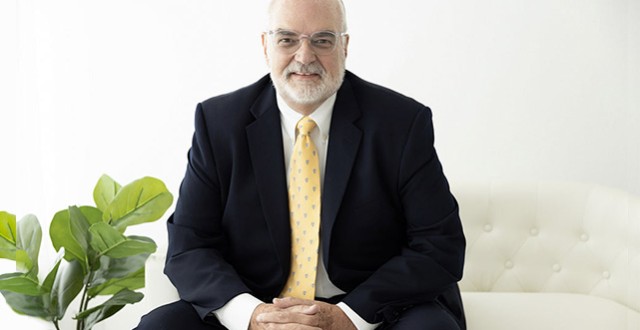
- Mediation
- Arbitration
- Court Neutrals
- Online Dispute Resolution
- Technology
- Court Decisions
- More
- Legislation
- Healthcare
- Guest Posts
- John DeGroote
- John C. Fleming
- Rick Freeman
- Professor Peter Friedman
- Honorable W. Royal Furgeson, Jr.
- James M. Gaitis
- Laura A. Kaster
- Professor John Lande
- Philip J. Loree, Jr.
- Michael McIlwrath
- F. Peter Phillips
- Professor Alan Scott Rau
- Professor Thomas J. Stipanowich
- Professor S.I. Strong
- Richard Webb
- Glen M. Wilkerson
- International arbitration
- Regulation
- Sports and Entertainment
- We’re Back!!!!Well, it’s been a while since we published and that is about to change. Since I spent much of last year becoming
 JAMS Welcomes Karl Bayer to its Panel of NeutralsJAMS, the world’s largest private alternative dispute resolution (ADR) provider, is pleased to announce that Karl Bayer
JAMS Welcomes Karl Bayer to its Panel of NeutralsJAMS, the world’s largest private alternative dispute resolution (ADR) provider, is pleased to announce that Karl Bayer Class Action Waivers in Arbitration Agreements: The Twenty-First Century Arbitration Battleground and Implications for the EU CountriesLinda S. Mullenix, Morris & Rita Atlas Chair in Advocacy at the University of Texas School of Law, has written “Class Ac
Class Action Waivers in Arbitration Agreements: The Twenty-First Century Arbitration Battleground and Implications for the EU CountriesLinda S. Mullenix, Morris & Rita Atlas Chair in Advocacy at the University of Texas School of Law, has written “Class Ac Picking the Proper Technological Tool for Problem-Solving in ArbitrationProfessor Amy J. Schmitz, John Deaver Drinko-Baker & Hostetler Chair in Law and Co-Director of the Translational Data An
Picking the Proper Technological Tool for Problem-Solving in ArbitrationProfessor Amy J. Schmitz, John Deaver Drinko-Baker & Hostetler Chair in Law and Co-Director of the Translational Data An
Recent Posts
Applying Conflict Resolution Skills in Health Care PART V : Use Objective Criteria
By Holly Hayes One month ago, we started our health care conflict resolution series (see Part I, Part II, Part III, and Part IV) focusing on the Roger Fisher, William Ury Getting to YES principled negotiation method involving: 1. Separating the people from the problem. 2. Focusing on interests, not positions. 3. Generating a variety of possibilities before deciding what to do. 4. Insisting that the result be based on some objective standard. Our final post in this series focuses on “using objective criteria.” In almost any negotiation, no matter how many options are generated to “split the pie,” there is still going to be a conflict of interests. As seen in our previous posts, the physician wants to continue his vacation and the nurse on the unit wants him to sign his verbal orders per hospital policy, the radiology director wants to decrease patient complaints and the technician wants to be heard so he can be part of the solution, the physician wants to sell his practice for a high price and the hospital wants to purchase it for a low price, the ED manager wants housekeeping to help with the cleaning and housekeeping wants to work within its budgeted number of staff. In each situation, there are objective criteria that can be used to decrease the likelihood that the negotiation will become just a contest of wills and the ongoing relationship can be saved. Objective standards allow both parties to commit to reaching a solution based on principle, not pressure. In our examples, objective criteria could be hospital policy, regulatory standards, industry standards, standards used by local hospitals or physician groups or budgetary constraints. As the parties begin the process of identifying objective criteria, they can: 1. Jointly search for reasonable criteria. 2. Be open to the most appropriate standards and how they can be applied. 3. Never yield to pressure from the other party, but defer to objective standards. Pressure can take many forms: bribes, threats, manipulative appeals to trust or a simple refusal to back down. The principled response in each of these situations is the same: invite the other party to state their reasoning, suggest objective criteria that may apply and finally, refuse to budge except on the basis of objective criteria. This is the final post in our series on using the principled negotiation method in health care conflict. Look for future posts on Disputing on utilizing proven conflict resolution techniques specifically in health care. We invite your comments on this post and any suggestions for upcoming posts. Technorati Tags: Healthcare, ADR Holly Hayes is a mediator at Karl Bayer, Dispute Resolution Expert where she focuses on mediation of health care disputes. Holly holds a B.A. from Southern Methodist University and a Masters in Health Administration from Duke University. She can be reached at: holly@karlbayer.com.
Continue reading...Texas Appellate Court Enforces Attorney-Client Arbitration Agreement
The Fourteenth Court of Appeals of Texas held that a trial court abused its discretion in denying a motion to compel arbitration. I. Background In Pham v. Letney, no. 14-09-00387-CV (Tex.App.-Houston [14th Dist.] March 4, 2010) Shelly Letney hired the law firm of Smith & Garg, L.L.C. to pursue her personal injury claims she allegedly suffered in an automobile accident. Sarita Garg is a named partner in the firm and Steven Tuan Pham, an associate with the firm, was at least partially responsible for handling Letney’s case. The attorney-client representation agreement between Letney and Smith & Garg, L.L.C. contained the following arbitration provision: ARBITRATION Any and all disputes, controversies, claims or demands arising out of or relating to this Agreement or any provision hereof, whether in contract, tort or otherwise, at law or in equity, for damages or any other relief, shall be resolved by binding arbitration pursuant to the Federal Arbitration Act in accordance with the Commercial Arbitration Rules then in effect with the American Arbitration Association. Any such arbitration proceeding shall be conducted in Harris County, Texas pursuant to the substantive federal laws established by the Federal Arbitration Act. Any party to any ward [sic] rendered in such arbitration proceeding may seek a judgment upon the award and that judgment may be entered by any federal or state court in Montgomery County, Texas [sic] having jurisdiction. Letney sued Pham, Garg, and Smith & Garg, L.L.C., alleging legal malpractice and other claims based on a failure to timely file suit for Letney’s alleged personal injuries. The defendants filed a motion to compel arbitration pursuant to the attorney-client agreement and the trial court denied the motion without stating the basis for the holding. II. Majority Opinion The Fourteenth Court of Appeals first determined whether the issues are properly raised in a direct interlocutory appeal or in a petition for writ of mandamus. The court explained that “[i]t is well-settled that when a trial court denies arbitration under the Texas Arbitration Act (“TAA”), the order is subject to interlocutory appeal, whereas when a court denies arbitration under the FAA, relief must be sought in a petition for writ of mandamus.” Because the arbitration provision in the contract explicitly designated arbitration pursuant to the Federal Arbitration Act (“FAA”), the court dismissed Phan’s interlocutory appeal and considered his petition for writ of mandamus. Then, the court stated the test a party seeking to compel arbitration must establish: (a) the existence of an agreement to arbitrate and (b) that the claims fall within the scope of that agreement. The court noted that Letney acknowledged that she had signed the representation agreement and does not contest that the allegations are within the scope of that provision. Then, the court began discussing Letney’s four defenses against enforcement of the arbitration provision. (1) Letney cites TAA section 171.002, which prohibits arbitration agreements in respect to claims for personal injuries unless each party to the agreement receives advice of counsel and the agreement is in writing and signed by each party and each party’s attorney. Tex. Civ. Prac. & Rem. Code § 171.002(a)(3), (c). However, the court stated that “[e]ven assuming that the TAA section in question can apply to an arbitration agreement selecting FAA procedures, it would not apply in the circumstances presented by this case because Letney has alleged legal malpractice in this lawsuit and not personal injury.” (2) Letney argues that “arbitration pursuant to the FAA would be improper, despite the selection of FAA arbitration in the arbitration clause, because the contract in question, for legal services in Texas concerning a Texas-based claim, had no impact on interstate commerce.” But the court was not persuaded because here, the arbitration provision clearly specified arbitration under the FAA. The court said that “the majority of courts that have examined this issue have upheld the right of the parties to an arbitration agreement to choose a particular arbitration scheme (state or federal) to govern any resulting arbitration under the agreement.” (3) Letney claims that the arbitration provision was unconscionable and therefore, invalid. Letney cited Chief Justice Hardberger’s dissent in Henry v. Gonzalez, 18 S.W.3d 684 (Tex. App.—San Antonio 2000, pet. dism’d by agr.). In Henry, Justice Hardberge argued that “arbitration clauses between attorney and client should be held against public policy in the absence of additional protections for the client.” However, the court said that “we believe that such policy arguments are better directed to the legislature.” Letney also cites an opinion by the Texas Ethics Commission in which the Commission suggested that it would be permissible under the Texas Disciplinary Rules of Professional Conduct to include an arbitration clause in an attorney-client contract only if the client was made aware of the advantages and disadvantages of arbitration and had sufficient information to make an informed decision as to whether to include the clause. See Op. Tex. Ethics Comm’n No. 586 (2008). However, the court responded that “Opinion No. 586 did not impose any restrictions on attorney-client arbitration clauses because (1) such opinions are advisory at best, (2) the commission expressly declined in the opinion to opine on the substantive law concerning arbitration clause enforceability, and (3) substantive law does not include any such restrictions.” (4) Finally, Letney cites the Texas Disciplinary Rule of Professional Conduct 1.08(g), which provides that “[a] lawyer shall not make an agreement prospectively limiting the lawyer’s liability to a client for malpractice unless permitted by law and the client is independently represented in making the agreement . . . .” The court, however, stated that an agreement to arbitrate does not limit a party’s liability, but “it merely denominates a procedure for determining that liability.” The court concluded that none Letney’s arguments have merit, dismissed the interlocutory appeal, and conditionally granted the writ of mandamus. III. Dissenting Opinion Justice Charles Seymore filed a dissenting opinion on this case (pdf). In the opinion, Justice Seymore expressed his concern for mandatory arbitration provisions in attorney-client agreements stating that: I have no disagreement with the majority’s […]
Continue reading...Liability Reform Discussed at President Obama’s Health Care Summit
By Holly Hayes On Feb. 23, the American Medical Association and 76 other medical societies wrote a letter to President Barack Obama and congressional leaders asking them to adopt legislation to reduce unnecessary medical lawsuits. “‘Defensive medical procedures, prompted by the threat of litigation, add substantial costs for individuals, private and public payers,” the letter stated (read the letter here). At President Obama’s health care summit on Feb. 25, Dr. Coburn, an obstetrician-gynecologist cited estimates by Thompson-Reuters, that the “U.S. health system wastes at least $600 billion a year because of poorly coordinated care, fraud, frivolous lawsuits and a lack of preventive care.” Right after the summit, on March 3, President Obama outlined a revised version of his comprehensive health care reform proposal (read article by the American Medical News here) . The plan includes a section specifically on medical liability calling for expanding medical liability alternatives by adding $50 million to a $23 million state pilot project managed by Health and Human Services Secretary Kathleen Sebelius (see our post on this pilot project here ). We welcome your comments on the continuing discussion of health care reform and medical liability. Technorati Tags: Healthcare, ADR Holly Hayes is a mediator at Karl Bayer, Dispute Resolution Expert where she focuses on mediation of health care disputes. Holly holds a B.A. from Southern Methodist University and a Masters in Health Administration from Duke University. She can be reached at: holly@karlbayer.com.
Continue reading...International Mediation Law Review Article | Transatlantic Perspectives on Alternative Dispute Resolution: Teaching Comparative Perspectives in Mediation
We came across an interesting article from the landmark symposium Transatlantic Perspectives on Alternative Dispute Resolution. The piece is entitled Teaching Comparative Perspectives in Mediation: Some Preliminary Reflections, 81 St. John’s L. Rev. 259 (2007) and was written by professor Jacqueline Nolan-Haley (pictured right). Here is an excerpt: Introduction Mediation is no longer the stepchild of international dispute resolution practice. Scholars and practitioners recognize its enormous potential as a confidential, cost-saving, time-saving, relationship-enhancing process that gives control over disputes to the affected parties and often results in greater levels of satisfaction than litigation. Whether its appeal has peaked because of growing disenchantment with commercial arbitration or the perception that international arbitration has become like U.S. litigation, 1 mediation is beginning to blossom on the international dispute resolution landscape.The growing interest in mediation at the international level is reflected in numerous international and regional organizations, laws and protocols. Notable examples include organizations such as the Commercial Arbitration and Mediation Centre of the Americas (“CAMCA”), 2 the CPR International Institute for Conflict Prevention & Resolution, 3 and the International Chamber of Commerce (“ICC”) that offer rules and procedures to resolve private commercial disputes through mediation. The World Trade Organization’s (“WTO”) dispute settlement system offers mediation as one method of resolving trade disputes between members. 4 And, a primary example of legislation is the Model Law on International Commercial Conciliation that was developed by the United Nations Commission on International Trade Law (“UNCITRAL”). 5 The Model Law, which was recommended by the United Nations for adoption by member states in 2002, suggests an international consensus on the value of mediation as a mainstream method of resolving disputes. 6While mediation programs are developing rapidly across the globe, given the transatlantic focus of this conference Transatlantic Perspectives on ADR-and its London location, it is useful to consider some recent examples of mediation’s growth in Europe. In 2002, the European Commission issued a Green Paper that identified ADR as a “political priority” for all “European Union institutions, whose task it is to promote these alternative techniques, to ensure an environment propitious to their development and to do what it can to guarantee quality.”7 The purpose of the paper was to encourage use of ADR as a means of increasing access to justice in cross-border disputes.8 The paper initiated a wide-spread consultation with Member States and interested parties on possible measures to promote the use of mediation.9 Read the full article here. More articles by Professor Nolan-Haley are here. Technorati Tags: ADR, law, arbitration
Continue reading...Arbitration
Mediation
Healthcare Disputes
Legal Research
About Disputing
Disputing is published by Karl Bayer, a dispute resolution expert based in Austin, Texas. Articles published on Disputing aim to provide original insight and commentary around issues related to arbitration, mediation and the alternative dispute resolution industry.
To learn more about Karl and his team, or to schedule a mediation or arbitration with Karl’s live scheduling calendar, visit www.karlbayer.com.






